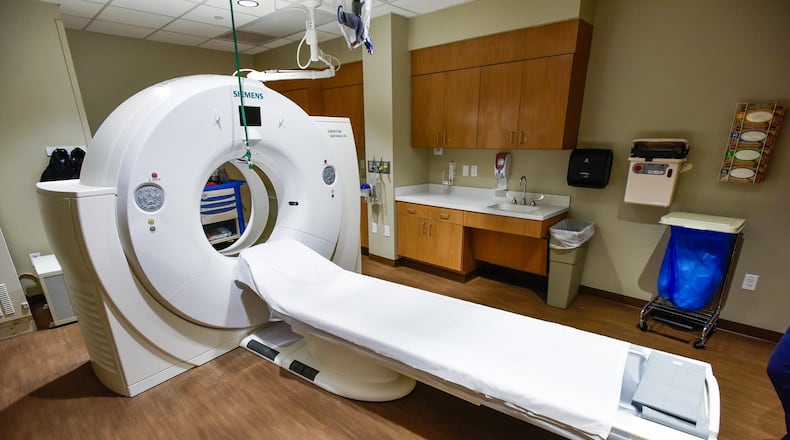The association surveyed the majority of its membership, spokesman John Palmer said, and estimates that 80% of the $1.27 billion is attributed to the suspension of non-essential surgeries and procedures.
Coronavirus: If someone is sick, what should household members do?
Locally these losses have contributed to furloughs at Premier Health and Kettering Health Network hospitals amid the pandemic, stemming from the reduction in services provided (and staff needed to provide those services) and from the loss in revenue.
“Governor DeWine’s insight to require hospitals to delay non-essential or elective surgeries has allowed hospitals to conserve much-needed personal protective equipment (gowns, masks, gloves and face shields) that will be needed to protect health-care workers during COVID-19,” said Sarah Hackenbract, president and CEO of Greater Dayton Area Hospital Association.
As those non-essential surgeries have been delayed due to COVID-19, she said several hospitals have needed to enact temporary furloughs.
“Hospitals continue to adjust staffing based on the care needed today, in preparation for an increase in COVID-19 patients, and as we look toward resuming non-essential surgeries,” Hackenbract.
MORE: Blood center, Premier using recovered patients’ plasma to fight COVID-19
Premier furloughed some non-clinical staff and employees not providing direct care during the pandemic. Furloughed workers are continuing to receive benefits. The health system stated employees can also take paid or unpaid time off and foundations have funds intended to support employees, similar to after the tornadoes when they set up employee assistance. Senior leaders at Premier have also taken temporary pay cuts.
Premier stated it is “still in the early stages of an unprecedented situation, and yet we remain confident in the resilience and capabilities of our Premier Health team to manage through this crisis together.”
Kettering Health previously said the health network “made the difficult decision to place some employees on furlough to allow them to access government benefits with waived waiting times. People who have been furloughed are still employees of Kettering Health Network and they are still receiving benefits. We look forward to welcoming them back to work once our patient volumes pick up.”
Kettering Health said where possible, employees who don’t have work in their own department are being redirected to other jobs. The health network also said its employee assistance fund helps cover expenses for furloughed employees like utilities, rent and other monthly bills. Some employees took paid time off or in some cases used a PTO bank of more than 1,200 hours, some of it donated by other employees.
Kettering Health also said employees could also take a voluntary leave of absence, such as if an employee is concerned about working in a hospital during the COVID-19 pandemic.
This is not just an Ohio problem. In a late March survey taking the pulse of 323 American hospitals during the pandemic, the U.S. Health and Human Services inspector general said hospitals surveyed described increasing costs and decreasing revenues as a threat to their financial viability.
MORE: Fifth Third deluged with 33K paycheck protection loan applications
Hospitals reported that ceasing elective procedures and other services decreased revenues, and many reported their cash reserves were quickly depleting, which could disrupt ongoing hospital operations.
Meanwhile, hospitals explained that their costs have increased as they prepare for a potential surge of patients by purchasing extra equipment (such as PPE and ventilators), remodeling rooms for negative pressure, or setting up drive-through clinics and tents.
Smaller, independent hospitals, such as rural hospitals and critical access hospitals, reported that they were at greater financial risk than those in larger systems and that they could face more financial uncertainty. As one hospital administrator observed, “There is no mothership to save us.”
Further, hospitals reported difficulty in getting reimbursed for treating patients in non-traditional spaces because there were no qualifying billing codes when treating patients in these locations. For example, to mitigate COVID-19 spread, one hospital relocated speech, occupational and physical therapy services off-site. However, the hospital said it was unable to bill for these services because it does not own the building housing the relocated services, or meet billing requirements.
The $2.2 trillion federal coronavirus response bill included $100 billion for health care providers to help ease some of these financial problems.
MORE: WPAFB requires commissary, exchange patrons to wear masks
The $100 billion earmarked for health care providers in the stimulus package will help quickly re-purpose operating rooms into intensive care units, subsidize hospitals losing revenue due to canceled procedures, and hire additional staff to replace infected workers, said Ashley Thompson, the American Hospital Association’s senior vice president for policy, told the Associated Press late March.
Hospitals will also receive an additional 20% Medicare reimbursement for COVID-19 patients.
Associated Press contributed to this report.
By the numbers: Ohio hospitals
$1.27 billion: Estimate monthly loss COVID-19 impact
$31.4 billion: 2017 statewide hospital economic impact
255,000: 2017 Ohioans directly employed
Source: Ohio Hospital Association
About the Author
